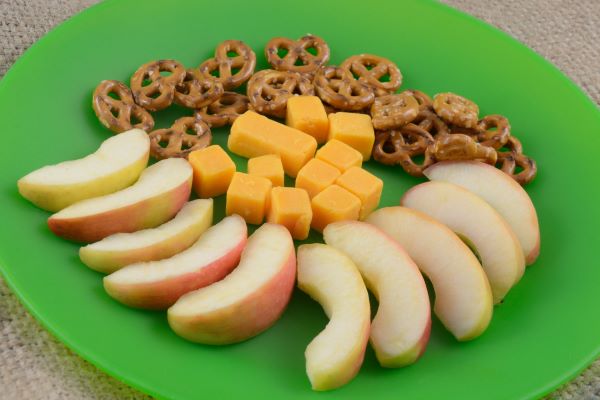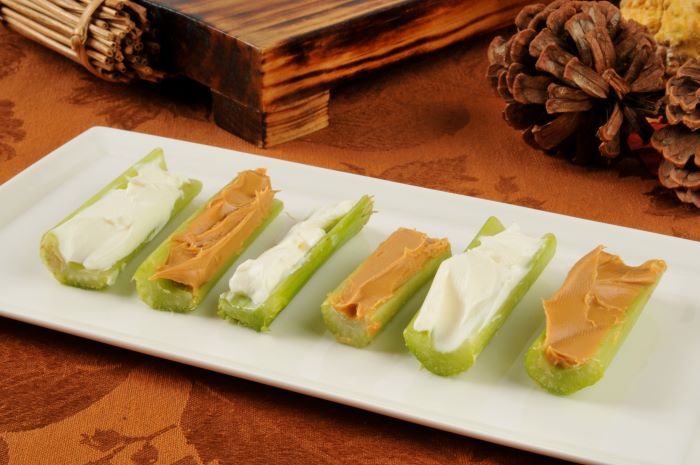Grocery List for Busy Families
Planning for healthy meals and snacks—and then doing the shopping—can feel like a lot of work, especially when you’re still transitioning to healthy habits. We’ve made it easier with a simple shopping list, money-saving tips, snack plan, and meal ideas you can customize to your family size and preferences.

Shopping List
Eggs
Low-fat milk
Low-fat part skim mozzarella cheese sticks
Low-fat cottage cheese
Greek yogurt
Whole grain English muffins
Whole grain break
Popcorn
Applesauce
Bananas
Apples
Avocados
Mandarin oranges or Clementines
Carrot sticks
Celery
Berries – Blue, Straw, Rasp, or Black
Watermelon
Cucumber
Lemons
Pineapple
Onions – fresh or frozen
Peppers – fresh or frozen
Green beans – fresh, frozen or canned
Corn – fresh, frozen or canned
Hummus
Peanut butter
Salsa
Salad dressing
Black beans
Kidney beans
Chickpeas or Garbanzo beans
Sparkling water or seltzer
Pretzels
Tortilla chips
Almonds
Lean ground turkey
+1 vegetable you haven’t tried
+1 fruit you haven’t tried
How to Prepare Healthy Foods
The healthiest groceries won’t do you any good of you don’t eat them. Knowing a handful of healthy meals that your family will eat is a big part of healthy success. How about breakfast for dinner? Adding diced vegetables to an omelet or scrambled eggs is a delicious way to increase your veggie intake. Add a piece of whole grain toast with avocado on top and get even closer to your 5 a day goal. Get more tips for adding fruits and veggies to your menu
Try using ground turkey in place of ground beef in chili or other soup recipes. Soups and stews provide an easy way to slip in extra vegetables or protein-rich beans. Plus, they can simmer in a slow cooker while you’re working, making meal prep and clean-up fast and simple. Get recipes and more meal ideas

Money-Saving Tips
There’s no nutritional difference between fresh, frozen, and canned fruits and veggies, as long as canned varieties aren’t packed in syrups or loaded with sodium. Even then, draining and rinsing the produce before using can help remove the unhealthy additives. Frozen and canned options can last longer and are often cheaper, so consider buying them. But know, too, that taste can vary—a family that loves fresh asparagus or green beans may not like the canned versions, for example.
Seasonal fruits and veggies cost less. You’ll pay less for broccoli, cabbage, onions, spinach, kiwi, pineapples, and strawberries in spring. Check this list for other seasonal options.
Don’t automatically dismiss pre-cut fruits and veggies because of their higher price tags. Family members may be more likely to grab ready-to-eat produce than foods that require prep work. Ultimately, you might end up saving money by buying the pricier option, especially if you find yourself often having to discard items that over ripened before getting prepped and eaten.
Get more money-saving shopping tips

Snack Plan
Now that you have all this food, what do you do with it? Try some carrots and pepper slices with ranch dressing and pretzels. Spread some peanut butter on celery or apple slices. Mix berries into cottage cheese. Get more snack ideas and then even more!
Add cucumber or lemon slices to a pitcher of water in the refrigerator for a tasty and refreshing drink. Get more flavored water ideas
Topics: Healthy Eating
Subscribe for more
Want more ideas for healthy schools, workplaces, child care providers, and families? Subscribe to our blog for weekly tips delivered right to your inbox!
September is Childhood Obesity Awareness Month NEXT »
Learning Gardens at School and Big Green at Home
